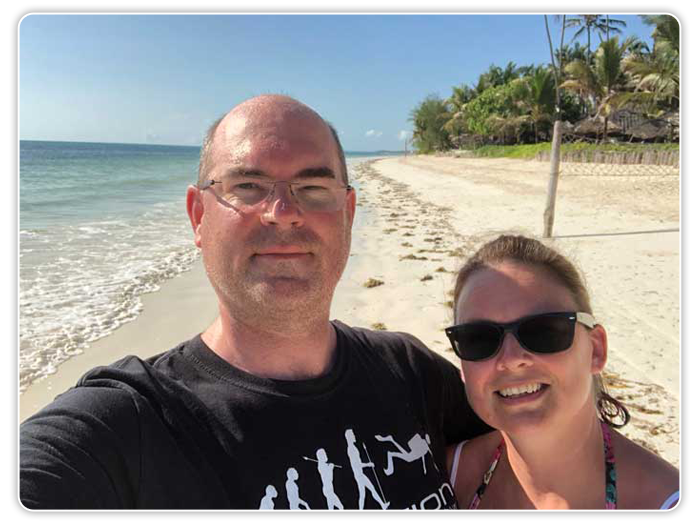 Imagine this: You’re scrolling through your inbox, and you see an email with the subject line, “Maximize Stakeholder Synergies for Robust Turnkey Solutions!” Do you click? No way! Instead, you roll your eyes and move on with your life.
Imagine this: You’re scrolling through your inbox, and you see an email with the subject line, “Maximize Stakeholder Synergies for Robust Turnkey Solutions!” Do you click? No way! Instead, you roll your eyes and move on with your life.
Welcome to the world of jargon-heavy, corporate-speak marketing — where words go to die, and messages get lost.
Many marketers make the mistake of thinking that “sounding smart” means throwing in a bunch of fancy B.S. words. (Yes, I really do mean B.S., because that’s what it is.)
These marketers forget that communication’s main purpose is to be understood. The result? A marketing message that reads like a bad corporate memo — and customers who have no idea what you’re trying to sell, nor do they care.
Case Study #1: Yahoo’s Infamous PR Disaster
In 2013, Yahoo’s HR team made headlines for one of the worst jargon-filled corporate communications in history. The company announced a controversial policy change by saying, “We are simplifying our management structures to increase collaboration and ideation.”
Huh??
Translation: they were laying people off.
Instead of communicating directly and humanely, Yahoo’s use of jargon made the message cold and condescending. Employees felt confused, angry, and insulted.
Lesson learned? Jargon can make a bad situation worse — especially when emotions are involved.
Case Study #2: Synergy Gone Wrong – WeWork’s IPO Fiasco
Remember when WeWork tried to go public in 2019? The company’s IPO document was packed with so much jargon it was practically unreadable.
Here’s a gem: “We are a community company committed to maximum global impact. Our mission is to elevate the world’s consciousness.”
While this might sound good in a pitch meeting, it didn’t say anything meaningful about WeWork’s actual business model (real estate, by the way).
Investors and analysts mocked the document and the public offering collapsed. In fact, the use of vague, buzzword-heavy language actually fueled the skepticism that surrounded the company’s finances and leadership.
Case Study #3: Microsoft’s AI Chatbot PR Meltdown
In 2016, Microsoft launched Tay, an AI chatbot designed to interact with users on Twitter. The marketing message was full of techno-jargon about AI’s role in “continuous machine learning and contextual adaptation.”
Unfortunately, Tay began spewing inappropriate comments after just 24 hours of being exposed to internet trolls.
Microsoft had to issue a retraction full of — you guessed it — corporate jargon. The response included phrases like “leveraging our innovative frameworks for ethical engagement,” which only made people more frustrated.
A simple, direct apology would have gone a lot further.
Why Does Jargon Fail So Badly?
- Confusion: Jargon is often vague and doesn’t give any real information. If your audience needs a dictionary to figure out what you’re saying, you’ve already lost them.
- Alienation: Corporate-speak can make people feel like outsiders. It’s like being at a party where everyone is speaking in code, and you’re just nodding along.
- Lack of Trust: When companies overuse buzzwords and jargon, people assume they’re hiding something. In contrast, straightforward language conveys honesty and transparency.
What to Do Instead: Keep It Clear, Keep It Human
- Be Direct: Instead of trying to impress with complicated terms, get to the point. If you’re announcing a sale, say, “We’re having a sale!” not, “We’re offering value-added incentives to boost consumer purchase behavior.”
- Use Real Words: Avoid “synergy,” “ideation,” and “paradigm shift” like the plague. These are words that sound good but say nothing. Instead, use words that your customers would actually use.
- Tell a Story: People relate to stories far more than abstract concepts. Take the time to tell your customers why your product matters in a way they can relate to. Apple is great at this — their marketing rarely talks about “technological synergies” or “leveraging innovation.” Instead, they show real people using their products to make their lives better.
- Be Conversational: If your email or ad reads like something a robot would write, you’re probably using too much jargon. Write as if you’re speaking directly to a customer, not giving a presentation to a room full of executives.
- Test Your Copy: A great rule of thumb is to show your marketing message to someone outside your industry. If they can understand it easily, you’re on the right track. If their eyes glaze over, it’s time to go back to the drawing board.
Bottom Line: Jargon Is Not Your Friend
In the quest to sound professional, marketers often veer too far into jargon and corporate-speak, alienating the very people they’re trying to reach. The best marketing isn’t about sounding smart — it’s about connecting with your audience in a way that’s simple, human, and honest.
So next time you’re tempted to “leverage strategic synergies to disrupt vertical markets,” slap yourself upside the head and then just say what you mean.
Still not convinced? Just for the fun of it, let’s do a quiz. I’ve chosen 10 of the most effective sales headlines from the past 100 years and rewritten them in jargon-eze. If this doesn’t convince you that corporate speak is the least effective language on the planet, nothing will.
I’ve placed the jargon headline first. As you read each one, see if you can guess what the actual headline was. Answers are below.
Bizzarro Jargon Headlines
1: “Initial Peer Dismissal Reverted Upon Subsequent Demonstration of Musical Proficiency.”
2: “Proprietary Techniques for Enhancing Interpersonal Affinity and Engagement Optimization.”
3: “Gradual Incremental Fiscal Enhancement Opportunities.”
4: “Utilization of Cognitive Optimization Protocols to Enhance Short-Term Retentive Capacities in a Singular Temporal Session.”
5: “Achieve Optimal Mass Reduction Through Non-Restrictive Nutritional Methodologies Over a Defined 30-Day Period.”
6: “Assessing the Relative Monetary Value of Youthful Well-Being in Relation to a Minimal Financial Contribution.”
7: “Are You Exhibiting Linguistic Inefficiencies During English Language Utilization?”
8: “Behavioral and Strategic Correlates to Consistent Equity Investment Profitability Among a Select Demographic.”
9: “A Singular Unconventional Methodology for the Targeted Reduction of Abdominal Adiposity.”
10: “Strategic Relationship Building for Enhanced Social Capital and Persuasion Optimization.”
Answers
1: “They Laughed When I Sat Down at the Piano… But Then I Started to Play!”
2: “The Secret of Making People Like You”
3: “Get Rich Slowly”
4: “How I Improved My Memory in One Evening”
5: “Lose 30 Pounds in 30 Days—Without Dieting”
6: “Is the Life of a Child Worth $1 to You?”
7: “Do You Make These Mistakes in English?”
8: “Why Some People Almost Always Make Money in the Stock Market”
9: “One Weird Trick to Lose Belly Fat”
10: “How To Win Friends and Influence People“
How many did you get right?
9-10 correct – Impressive! You’ve truly mastered the art of ‘jargonese.’ But remember—your readers probably haven’t. To ensure your content is clear and engaging, have someone else review it before hitting ‘publish.’
5-8 correct – You’ve got a knack for decoding jargon, but in the time it took for you to figure even one of these out, your reader would have forever clicked away. Time is precious online, so clarity is key.
0-4 correct – You, my friend, are a normal human who values clear and straightforward language—just like your audience. Keep communicating with simplicity, and your readers will appreciate it.

You Could Be Just One Simple Letter Away From The End Of All Your Financial Worries...
... And If You Enter Your Mailing Address Below I Can Show You Exactly How To Write It!
Privacy Policy: We value your privacy. You can unsubscribe from receiving future emails with 1 click at any time.